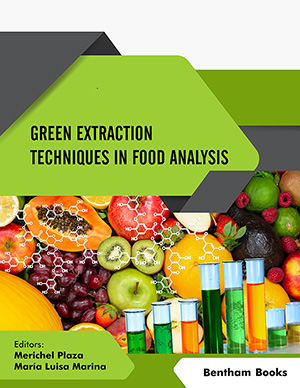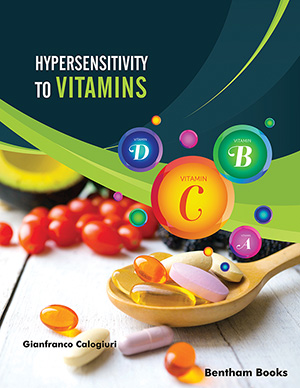Abstract
Acrylamide is classified as a hazard whose formation in carbohydrate-rich food cooked at a high temperature has created much interest in the scientific community. The review attempts to comprehend the chemistry and mechanisms of formation of acrylamide and its levels in popular foods. A detailed study of the toxicokinetics and biochemistry, carcinogenicity, neurotoxicity, genotoxicity, interaction with biomolecules, and its effects on reproductive health has been presented. The review outlines the various novel and low-cost conventional as well as newer analytical techniques for the detection of acrylamide in foods with the maximum permissible limits. Various effective approaches that can be undertaken in industries and households for the mitigation of levels of acrylamide in foods have also been discussed. This review will assist in providing an in-depth understanding of acrylamide that will make it simpler to assess the risk to human health from the consumption of foods containing low amounts of acrylamide.
Keywords: Acrylamide, Maillard reaction, neurotoxicity, carcinogenicity, analysis, methods of mitigation.
[http://dx.doi.org/10.1021/jf020302f] [PMID: 12166997]
[http://dx.doi.org/10.1007/s11947-010-0470-x]
[http://dx.doi.org/10.1039/C9FO02482D] [PMID: 31989150]
[http://dx.doi.org/10.1038/419449a] [PMID: 12368845]
[http://dx.doi.org/10.1038/419448a] [PMID: 12368844]
[http://dx.doi.org/10.1080/10408398.2019.1588222] [PMID: 30907623]
[http://dx.doi.org/10.1021/jf030204+] [PMID: 14705871]
[http://dx.doi.org/10.1016/B978-0-12-802832-2.02001-5]
[http://dx.doi.org/10.1002/1438-9312(200211)104:11<762:AID-EJLT762>3.0.CO;2-R]
[http://dx.doi.org/10.1021/tx034088g] [PMID: 14565766]
[http://dx.doi.org/10.1021/jf049421g] [PMID: 15315400]
[http://dx.doi.org/10.1007/0-387-24980-X_15] [PMID: 16438299]
[http://dx.doi.org/10.1021/jf00060a001]
[http://dx.doi.org/10.1021/jf0495486] [PMID: 15315399]
[http://dx.doi.org/10.1021/jf034180i] [PMID: 14705913]
[http://dx.doi.org/10.1021/jf034581y] [PMID: 14558775]
[http://dx.doi.org/10.1016/j.chroma.2005.03.123] [PMID: 15974113]
[http://dx.doi.org/10.1080/19393210.2014.894141] [PMID: 25029406]
[http://dx.doi.org/10.1158/1055-9965.EPI-05-0647] [PMID: 16492914]
[http://dx.doi.org/10.1159/000069715] [PMID: 12673101]
[http://dx.doi.org/10.1016/j.tiv.2010.12.007] [PMID: 21172417]
[http://dx.doi.org/10.1007/0-387-24980-X_9] [PMID: 16438293]
[http://dx.doi.org/10.1016/j.taap.2008.12.001] [PMID: 19118568]
[http://dx.doi.org/10.1007/s00204-016-1869-6] [PMID: 27738744]
[http://dx.doi.org/10.1002/ijc.24165] [PMID: 19123476]
[http://dx.doi.org/10.1002/ijc.27493] [PMID: 22336951]
[http://dx.doi.org/10.1007/s00204-006-0109-x] [PMID: 16699760]
[http://dx.doi.org/10.1002/bdrb.20030] [PMID: 15729727]
[http://dx.doi.org/10.1016/S0300-483X(00)00226-2] [PMID: 10963856]
[PMID: 15366289]
[http://dx.doi.org/10.1002/pros.22643] [PMID: 23335051]
[http://dx.doi.org/10.1289/ehp.866853] [PMID: 3780633]
[http://dx.doi.org/10.1016/0165-1218(85)90075-8] [PMID: 3908926]
[http://dx.doi.org/10.1016/0027-5107(95)00037-J] [PMID: 7623872]
[http://dx.doi.org/10.2478/intox-2018-0007] [PMID: 31719782]
[http://dx.doi.org/10.1007/BF00967449] [PMID: 7969750]
[http://dx.doi.org/10.1007/BF02815193] [PMID: 8887940]
[http://dx.doi.org/10.1023/A:1022579817020] [PMID: 12652090]
[http://dx.doi.org/10.7537/marslsj100313.271]
[PMID: 7200579]
[http://dx.doi.org/10.1111/j.1365-2990.1988.tb00888.x] [PMID: 3146707]
[http://dx.doi.org/10.1016/0006-8993(89)90028-0] [PMID: 2706498]
[PMID: 8558436]
[http://dx.doi.org/10.1177/0960327116686818] [PMID: 28067054]
[http://dx.doi.org/10.1093/mutage/get052] [PMID: 24150595]
[http://dx.doi.org/10.1021/acs.jafc.0c01345] [PMID: 32275416]
[http://dx.doi.org/10.1039/C9RA07570D]
[http://dx.doi.org/10.1021/tx200446z] [PMID: 22211389]
[http://dx.doi.org/10.3390/foods9040524] [PMID: 32331265]
[http://dx.doi.org/10.1007/s13201-019-0918-8]
[http://dx.doi.org/10.3358/shokueishi.44.303] [PMID: 15038112]
[http://dx.doi.org/10.1016/j.chroma.2004.10.094] [PMID: 16130751]
[http://dx.doi.org/10.1016/j.chroma.2005.04.037] [PMID: 16001548]
[http://dx.doi.org/10.38212/2224-6614.2604]
[http://dx.doi.org/10.1002/elps.200406044] [PMID: 15472956]
[http://dx.doi.org/10.1021/nn5009148] [PMID: 24588742]
[http://dx.doi.org/10.1016/j.snb.2018.06.033]
[http://dx.doi.org/10.1002/pol.1980.170180503]
[http://dx.doi.org/10.1016/j.chroma.2005.12.076] [PMID: 16426623]
[http://dx.doi.org/10.3390/s40900136]
[http://dx.doi.org/10.3390/foods9050573] [PMID: 32375322]
[http://dx.doi.org/10.3390/molecules25184140] [PMID: 32927728]
[http://dx.doi.org/10.1111/j.1750-3841.2012.02912.x] [PMID: 22950636]
[http://dx.doi.org/10.1016/j.foodchem.2009.01.093]
[http://dx.doi.org/10.1016/j.foodchem.2009.12.059]
[http://dx.doi.org/10.1016/j.foodchem.2015.12.065] [PMID: 26776011]
[http://dx.doi.org/10.1016/j.foodhyd.2016.10.019]
[http://dx.doi.org/10.17113/ftb.56.01.18.5422] [PMID: 29795996]
[http://dx.doi.org/10.1016/j.ifset.2007.06.008]
[http://dx.doi.org/10.1007/s11947-010-0349-x]
[http://dx.doi.org/10.1021/acs.jafc.7b00882] [PMID: 28535048]
[http://dx.doi.org/10.1271/bbb.70.1173] [PMID: 16717419]
[http://dx.doi.org/10.3136/fstr.20.979]
[http://dx.doi.org/10.1111/j.1365-2621.2004.tb09903.x]
[http://dx.doi.org/10.1016/j.fct.2014.03.037] [PMID: 24713263]
[http://dx.doi.org/10.1016/j.fct.2009.11.048] [PMID: 19948203]





















